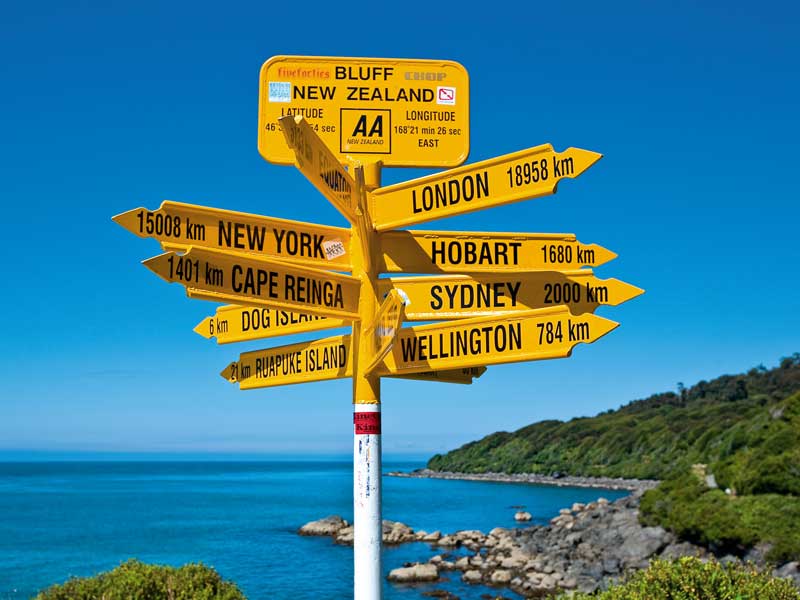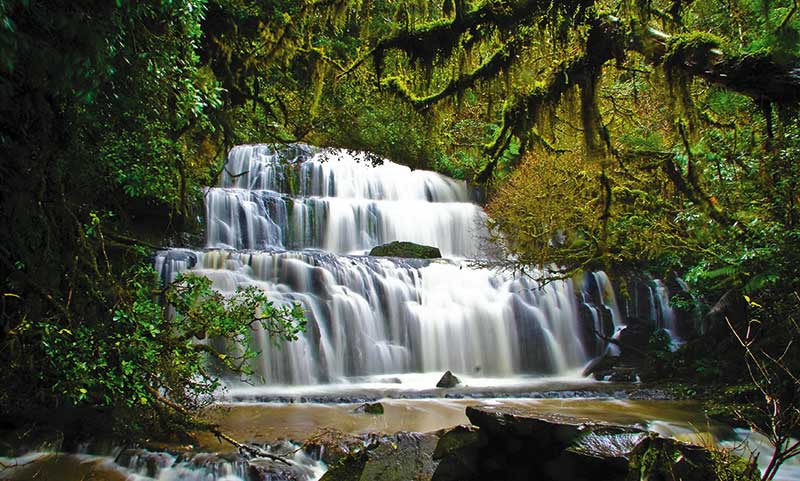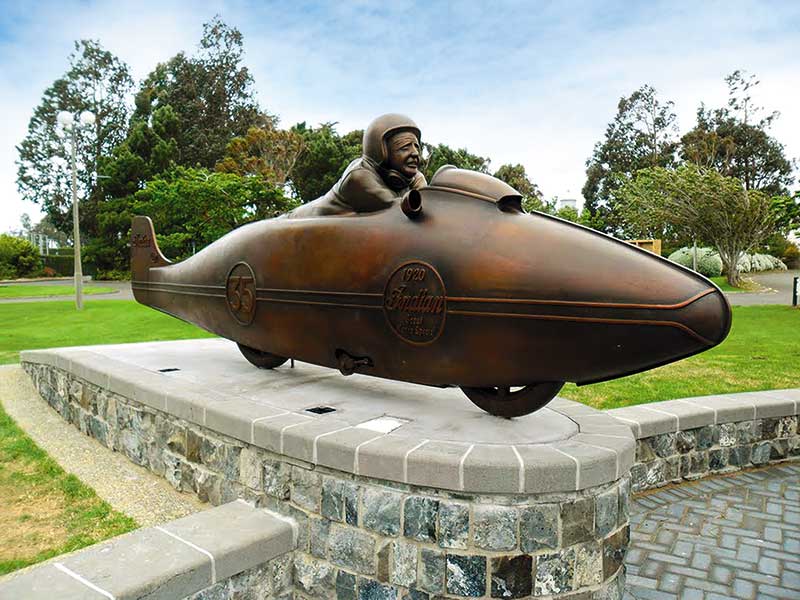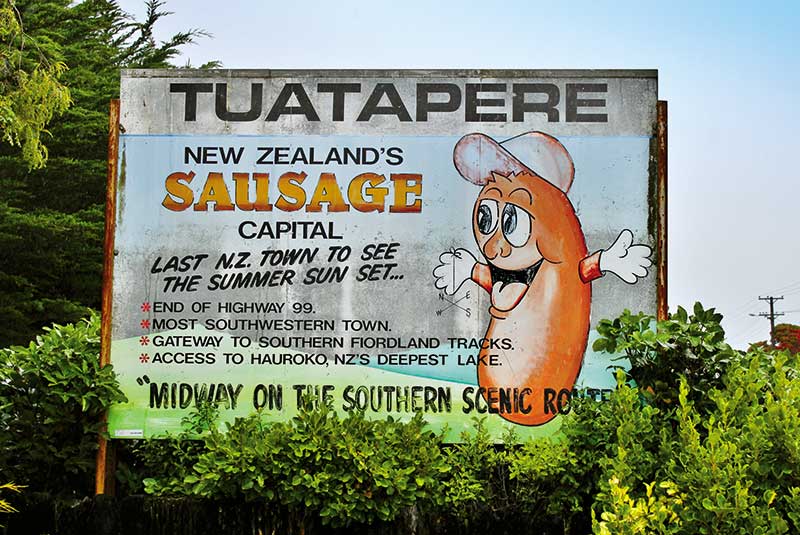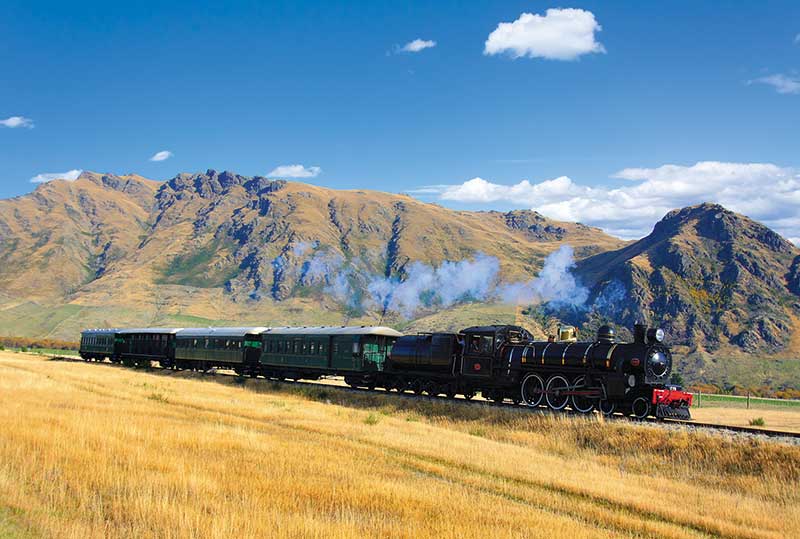One of the largest regions in New Zealand, Southland’s vast array of lakes, rivers, mountains, and open plains make it a place of incomparable and unique beauty.
Its rugged coastline, stretching a staggering 3400 kilometres, is one of Southland’s most treasured assets. Mostly free of development and home to countless species of native wildlife, it invites visitors back to nature in tranquil surroundings.
Although visitors traditionally come to Southland for its landscape, they stay for its people. Invercargill is known as ‘The Friendly City’ for its warm, welcoming, and colourful locals, serene surroundings, and wide open spaces which provide a great opportunity to find kinship and restore the soul.
Every one of Southland’s regions offers the traveller a unique discovery just waiting to be explored. From the majestic wilderness of Fiordland, to the bright lights of Invercargill and the rugged coastline of The Catlins, visitors will be captivated with every destination in Southland.
Maori first occupied Murihiku (translation – ‘the tail end of the land’) about a thousand years ago, followed by European sealers, whalers, and traders from Australia from the 1820s. After the discovery of gold in 1861, settlers largely from Otago and elsewhere in New Zealand colonised Southland.
At the turn of the century, Southland’s timber and coal industries contributed to the growth of the city and the many examples of Edwardian architecture are testimony to this prosperity. Southland boasts more than 10 museums throughout the region. Most are run by volunteers and tell the unique story of their community.
Gore and the surrounding area
Visitors are stunned at what Gore – population just 9500 – has to offer. Locals are the first to admit, rural Southland is the last place you’d probably expect such a considerable mix of cultural and historic nuggets.
Prepare to be impressed by the town’s art gallery. The envy of major cities, the gallery holds several prestigious private collections. In 2003, the Eastern Southland Art Gallery firmly stamped itself on New Zealand’s art trail, unveiling the John Money Wing, home to the renowned sexologist’s extensive private collection. It’s a diverse display of 300 major New Zealand, Australian, Aboriginal, African, and contemporary American works. The gallery alone attracts thousands of art lovers, astonished at the breadth and significance of the permanent exhibition.
Things to see and do
The Hokonui Heritage Centre highlights a bygone era of a region that saw the last of the Maori inter-tribal wars fought and the heady influx of thousands of prospectors eager to make their fortune from gold.
Hokonui Moonshine Museum: the Scots who settled in Eastern Southland brought their love of whiskey – and more than a dram of determination. Here you’ll find more than 120 years of moon shining.
Mataura River flows through the centre of Gore; this river provides fantastic fishing opportunities.
Southern Field Days: also in February is this annual rural gathering, celebrating all things agricultural.
Hokonui Pioneer Park features several local historical buildings from the early 1900s, the park is an interesting look into Southland’s pioneering past.
The thermal air above Five Rivers creates world-class gliding conditions allowing visitors to sightsee from the skies.
Fly fishing: the small settlements of Lumsden, Athol, and Garston which, along with Waikaia to the east, provide excellent fly fishing rivers and bush-clad outdoor adventure sites popular with trampers, anglers, campers, and boaties.
Around the Mountains Trail: starting at Kingston, wind your way through delightful northern Southland countryside. Guided tours are available.
Dolamore Park and Croydon Bush Scenic Reserve: just out of Gore, these parks are home to a number of mountain bike trails all of varying levels of intensity.
Southern Stars horse riding: located in Athol, northern Southland, view beautiful scenery from atop your trusty steed.
Places to eat and drink
Gore Farmers’ Market provides fresh and local produce, Saturday 10am-1pm, Norfolk Street.
Hokonui Moonshine Festival: this yearly February festival celebrates Southland’s moonshining past and Kiwi ingenuity.
Moth Restaurant Café Bar: offering a relaxing atmostphere, this eatery is located inside the village of Mandeville alongside the aviation museum.
Heartland Hotel Croydon – Blazing Copper Café and Bar: this is a popular local spot, boasting hearty meals and great conversation.
Bafe Bakery, Lumsden: winner of The Best Eatery on the Road competition for two years running, this bakery is a must. Make sure to try its famous Man Nuts!
Gypsy Fair: from 29-30 March, this popular and famous fair comes to town only once a year.
Stu’s World Famous Fishing Shop: if you’re travelling through Athol and you’re a keen fisherman, this stop is a must. It is full of interesting art, memorabilia, flies, T-shirts, caps and fishing tackle.
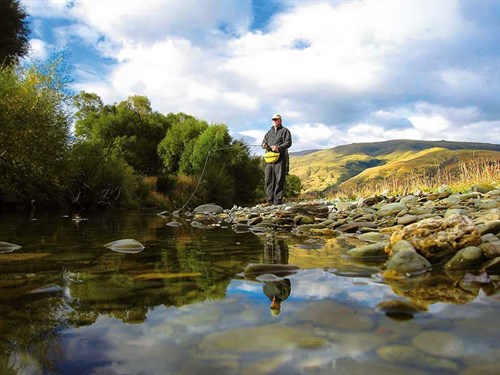
Invercargill and the surrounding area
Any trip down south has to include a couple of days exploring Invercargill. Come and experience the warmth and hospitality of this city makes it such a great place to visit. The City of Water and Light has a population of 53,000, and buzzes with the prosperity of a thriving economy, the vivacity of student life, and a history that marries the strong Maori and Celtic influence that pioneered the province centuries ago.
The city’s long daylight hours in summer allow you more time to explore the striking Victorian and Edwardian architecture and heritage buildings that add to the rich character of the city. Like the rest of the region, its unique culture and spirit are set in the most beautiful of surrounds.
Things to see and do
Andersons Park Art Gallery and Eastern Southland Art Gallery: art enthusiasts will enjoy this stop off.
Queens Park: garden enthusiasts will love its 80 hectares of tree-lined walkways and diverse gardens.
Catlins River Walk: this track leads you through beech forest and is known for its hidden waterfalls and rare native birds. At Curio Bay you’ll find fossilised trees, over 180 million years old, embedded in coastal bedrock.
Andersons Park: stroll through 24 hectares of beautiful landscapes and gardens with an impressive Georgian-style residence as the focal point.
E Hayes & Sons Hardware Store: legend goes Burt Munro set a world land-speed record in 1967 on an Indian motorcycle he rebuilt in his backyard shed. Several of Burt’s bikes can be seen in-store.
Invercargill is home to the only indoor velodrome, which means the city hosts some of the world’s most elite cyclists and major cycling events, including the UCI Junior Track World Championships in 2012 and the Tour of Southland annually.
Places to eat and drink
Southern Farmers’ Market is held every Sunday, 9.30am-12.30pm year round, at Southland Boys High School, Invercargill.
Thar and Feather: offering great seafood and succulent smoked dishes at Southland Hotel, Strathern.
Bluff and Foveaux Strait
Just 20 minutes’ drive from Invercargill is New Zealand’s southernmost town and oldest continuously occupied European settlement, Bluff.
As Southland’s deep-water port, constructed in 1863, Bluff is home to a large fishing fleet and an array of seafood, including crayfish, blue cod, and the world famous and delectable Bluff oyster. Bluff Oysters are harvested from March until August, or until the allocated annual quota is achieved.
Things to see and do
Check out the captivating story of Bluff and Foveaux Strait’s maritime history at the Bluff Maritime Museum.
The famous Bluff signpost at Stirling Point is where State Highway 1 begins (or ends depending on your point of view).
Bluff Hill (Motupohue): take in the amazing views from the top of this extinct volcanic cone or venture out on one of the many great walking tracks.
Stewart Island: with the largest kiwi population in New Zealand, nature dominates on beautiful and secluded Stewart Island. Home to only 400 people and deliberately devoid of glitzy tourist trappings, this is the quintessential great escape.
Places to eat and drink
Bluff Oyster Festival is an annual event that celebrates the best seafood in New Zealand (usually held in May) is not to be missed.
Invercargill Brewery: drop in to sample a drop of the good stuff.
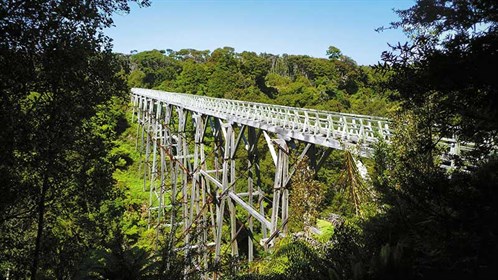
The Catlins and West Southland
The Catlins area is renowned for its rugged beauty and access to wildlife. Nugget Point, south of Balclutha, is the only place on mainland New Zealand where fur seals, sea lions and elephant seals co-exist. The area’s many walking tracks provide access to some special scenic, historic, and culturally significant sites. You will journey through podocarp forest, past rugged coastlines, hidden lakes, and stunning waterfalls.
Heading west along the Southern Scenic Route from Invercargill leads you to Southland’s western reaches, and some of the most fertile land of this incredibly arable province.
Western Southland’s first major coastal stop is Riverton. Known as the Riviera of the south, Riverton is right on the beach and is a popular holiday spot. Riverton has a close-knit community with a relaxed, arts vibe. There are great little shops, museums, and cafés.
Experience one of New Zealand’s top surfing spots at Colac Bay, a variety of walking options and opportunities to be close to nature, including New Zealand’s largest pod of Hector’s dolphins.
Things to see and do
Nugget Point: from here you can watch fur seals, sea lions, sooty shearwaters, shags, yellow-eyed penguins, spoonbills, and a breeding colony of gannets. And if you look closely, you may see Hector’s dolphins frolicking out in the waves.
The fossilised remains of an internationally significant example of a Jurassic forest lie on the beach at Curio Bay.
Cathedral Caves: accessed at low tide if the sea is calm, the caves’ ceilings rise more than 30 metres in places.
The Catlins Heritage Trail is a great way to explore the scenic beauty and the rich history of south Catlins and features 13 heritage sites.
Purakaunui Falls: the falls at the heart of the Catlins are reputed to be the most photographed in the country, with good reason.
Slope Point: the southernmost point of the South Island has magnificent views over the Southern Ocean.
The Lost Gypsy Gallery: in a house-bus at Papatowai, this gallery is a truly quirky experience. Owner Blair is an inventor and has created a unique attraction that’s well worth a look.
Te Hikoi Southern Journey, Riverton: another must-see just 25 minutes from Invercargill, the interactive displays tell the story of how Maori and European ancestors adapted to survive in Southland.
The Waitutu Forest was described by Professor David Bellamy as “probably the most important forest in the world”.
Dean Forest: at Clifden, this quick walk into the leads to a 1000-year-old Totara tree.
Lakes Hauroko or Monowai: take your pick of these two lakes, both bordering Fiordland National Park, and both offering great fishing, as well as wonderful bush walks.
Tuatapere: this small rural ideal base for many wilderness activities, such as tramping, walking, fishing, whitebaiting, hunting, and jet boating.
Percy Burn Viaduct: found on the Tuatapere Hump Ridge Track, you can lay claim to having witnessed the largest remaining wooden viaduct in the world.
Places to eat and drink
Sample fresh, local produce every Saturday at the Riverton Organic Farmers’ Market, 10.30am-12.30pm.
Tuatapere is also known as ‘The Sausage Capital of the World’, so be sure to pick up a feed of snarlers when you’re passing through.


